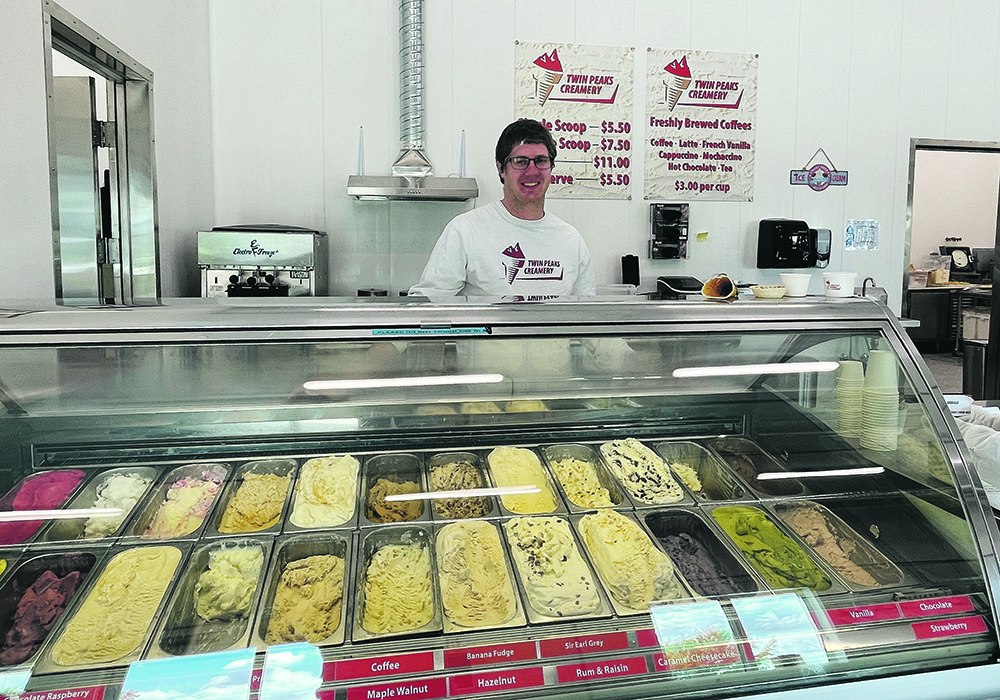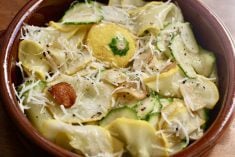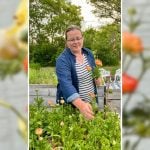The year-old business, which was established near Saskatoon with the support of SaskMilk, adds value to farm’s milk
A modern red and white building just off Highway 11, north of Saskatoon, is hidden from the gravel road by a line of trees.
It’s the home of Twin Peaks Creamery, which has become a go-to destination for farm-fresh ice cream in the Saskatchewan River Valley area since opening in March 2023.
Related story: Program devised to help entrepreneurs
Read Also
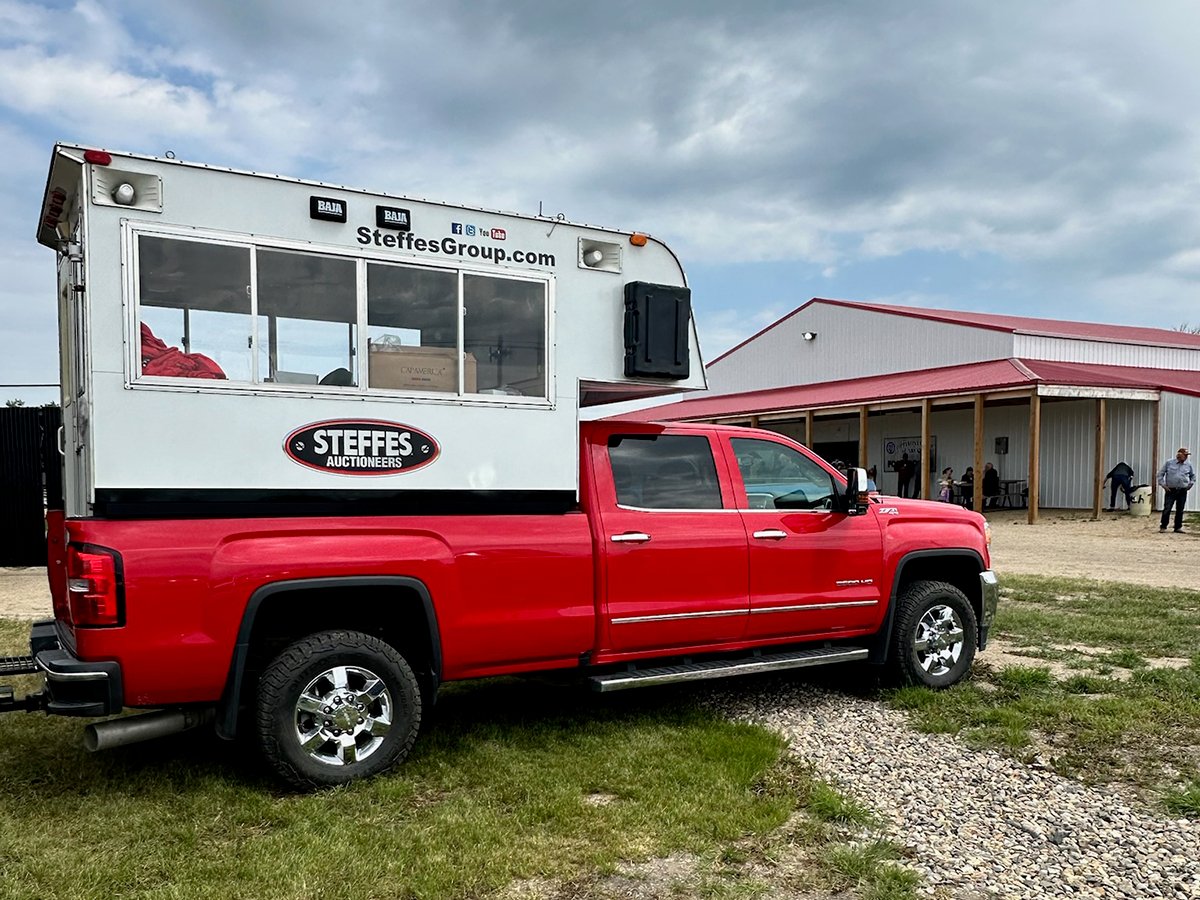
Farm auctions evolve with the times
Times have changed. The number of live, on-farm auctions is seeing a drastic decline in recent years. Today’s younger farmers may actually never experience going to one.
The entrepreneurial venture was established with support of SaskMilk and likely wouldn’t have been possible even 20 years ago.
On-farm processing and retail sales of dairy products are rarely seen in Canada. It’s a European concept involving many hoops to jump for Canadians who attempt it.
When Twin Peaks opened, it had six flavours. It finished the year with 12. It now has 24 flavours available, with seasonal rotations and new ones constantly tested and added.
“I’ve got 23 or 24 ice creams on rotation, right now, in the display,” said John Pruim, operator of the creamery and the brains behind the recipes.
“I’ve got, I think eight more seasonal ones and I’ve got a list of at least 20 to work on that I want to play with. And then there’s eight or nine sorbets as well.”
The recipes use fresh ingredients and milk from the Pruim’s dairy, Plumbossom Farms, near Osler, Sask., about 15 minutes north of the creamery.
On Mondays and Thursdays during the summer, Pruim takes the ride to pick up milk. He’s a licensed milk truck driver through SaskMilk, which requires him to agitate the tank, read the dipstick before and after loading, write out the trucker slip and send paperwork to SaskMilk.
Back at the creamery, the first batch of milk is poured into the pasteurizer and ice cream making begins.
Art Pruim, John’s father, has been a dairy farmer nearly all his life. He grew up in Abbotsford, B.C., on a dairy, worked at local dairies, then moved to Saskatchewan to purchase and run his own operation. Plumblossom Farms now milks 370 cows.
But as Art and his wife considered having the kids take over, he knew there’d be problems. John, the eldest son, had never wanted to be in the barn, milking cows or running equipment.
Instead, John shared his desire to start a creamery.
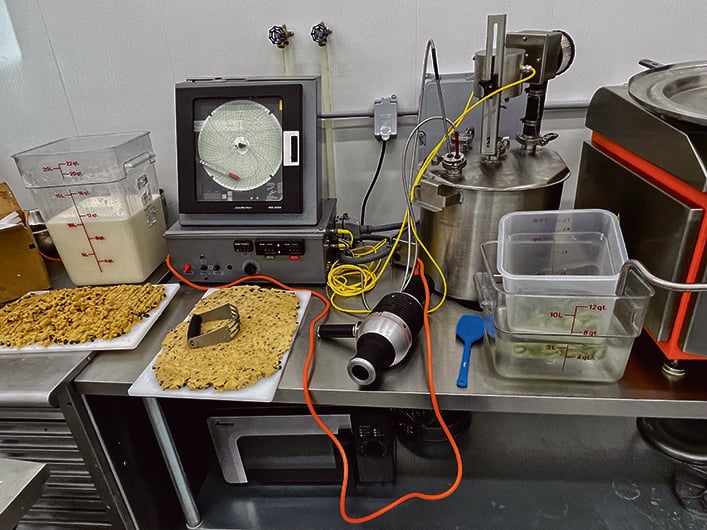
“The dream kind of started back when I was 12 or 13. When we did a road trip to B.C., we stopped at D Dutchmen Dairy, and I saw they made on-farm ice cream, I just loved the idea then,” John said.
“And then after university, I went and travelled Australia and then that’s where I kind of decided that I could probably turn the dream into reality.”
During those travels in 2018, he typed “ice cream courses” into Google and found the Carpigiani Gelato University in Italy.
“And I was like, well, if you’re going to learn how to make ice cream, going to Italy’s probably the best spot to do that. So that kind of became the idea, (the) long-term play.”
His trip to Europe was cut short in 2020 by the pandemic. But once home, pieces started to fall into place. A display case, pasteurizer and main ice cream machine came up for sale at an auction in Saskatoon. He bought them, then booked a flight back to Italy in late 2020 to take three weeks of gelato courses.
Using this training, Pruim has created a product at Twin Peaks that isn’t gelato but isn’t true ice cream.
“I kind of call it a hybrid because I’ve taken some of the gelato characteristic from the courses, but then I’ve mixed it with the milk fat from the ice cream side of things.
“So, I’ve kind of created what I call a hybrid product between the two to make something that I think is unique, but a lot better as well.”
Pruim explained the product flavours as a spectrum; some favouring ice cream textures, some a bit stickier like gelato, and some in the middle as a blend.
These texture-determining ingredients include locally sourced milk and whole foods.
“My strawberry ice cream is six ingredients. My vanilla ice cream is six ingredients. I’m trying to keep it clean and pure and I’m trying to stick with that root,” he said.
“That’s why flavours like bubble gum or root beer haven’t come out yet because I don’t just want to buy a fake root beer and throw it in there.”
There are a few exceptions, such as the use of Oreo cookies for the cookies and cream flavour. There’s no substitute for Oreos, he said.
The fresh philosophy extends to other things in the store. Cones are baked on site, which Pruim learned to do during his gelato courses. He makes the caramel and raspberry sauces, toffee bits and cookie dough — to name a few ice cream ingredients — in his onsite kitchen.
He also takes flavour requests and enjoys a challenge in developing his recipes. Yet things can go a bit sideways in recipe development.
Art shared the story of rum and raisin, saying the classic flavour was often requested. On John’s second attempt, he “nailed it” on taste but there was one issue.
“The amount of rum that he put in actually was just a touch too high,” Art said. “The ice cream was melting too fast once it was scooped to people. So, we had to just dial back the rum ever so slightly to make sure that you can maintain the consistency of an ice cream but yet not lose your flavour.”
John is nearly always toying with a new flavour, either in the kitchen or in his mind. Since that initial Google search, he’s maintained a Word document listing at least 30 flavours he wants to make.
“If I’m traveling somewhere, if I’m anywhere, I’m trying either flavours that I recognize or flavours that maybe are like, ‘that’s an interesting idea. Maybe I’ll try that,’” John said. “(I’ll) see what they’re doing and then I write down what I think is wrong with it and how I would do it myself.”
Art said John has been developing and refining many of the current flavours for the last year and a half.
“Sometimes he can figure it out in what we call two development stages, and the next one will take eight, nine, 10 attempts to get it right. So, it’s trying to get the flavour, the texture, the sugars right.
“It’s not as easy as it may look from the outside. And he’s a perfectionist about it. So, until he’s happy, they’re not available for sale.”
In one year, the creamery has seen a 50 per cent increase in sales.
For John, this translates to 16-hour workdays to keep up with demand. While there are three part-time employees for the retail portion, he is the only one who can deliver milk and conduct the ice cream development.
As much as he’d like to hire someone, he said he’s “very fussy” and would need just the right person to help him.
Extra hands will be required come autumn, as the order for more equipment has already been placed. The business is scaling up from a 50-kilogram pasteurizer to a 500-kilogram unit.
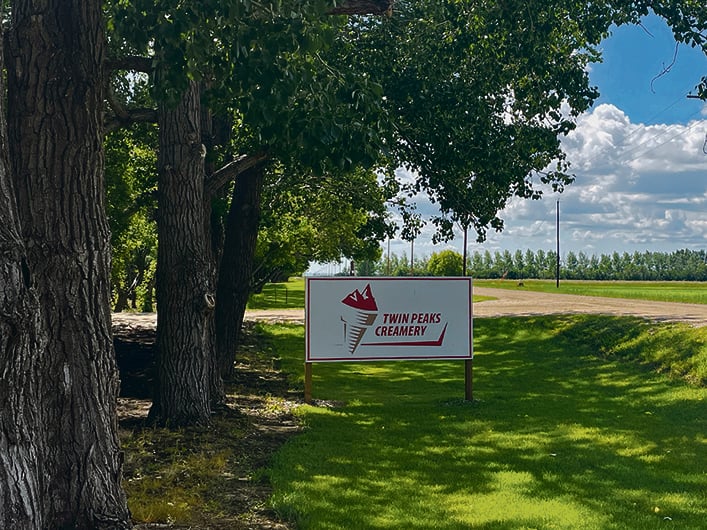
“We built the building purposely oversized to accommodate some future growth,” Art said. “It’s a tall building on purpose, in case we would go to larger equipment that has more pipes running along walls and whatnot to have enough room for chilling of product or cooling water to go through, and so forth.”
Future plans include sales of four-litre and 11-litre pails of ice cream.
Art said larger volumes are intended for a break into the wholesale market. They’re looking at farm-to-table restaurants and campgrounds, but not grocery stores.
The other plan is to work with other on-farm retail businesses to sell each others’ products.
“We, at the end of the day, just want to offer a product out there, but make the right product, get the people here,” Art said.
“So, offer a really good product, really good service and hopefully the people leave here happy and for the betterment of agriculture. That’s what we keep trying to tell people, is we’re there to actually help grow agriculture.”


